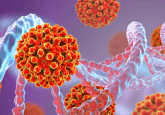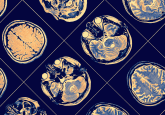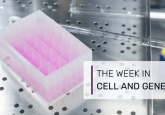Could lab-grown neurons be used to treat Alzheimer’s?

Scientists have been able to synthetically create matured neurons for the first time, which have the potential to treat neurological diseases.
Researchers from Northwestern University (IL, USA) have matured neurons using ‘dancing molecules’ to improve cell communication of neurons derived from human induced pluripotent stem cells (iPSC). It is thought that these could eventually be used to treat neurogenerative diseases such as Alzheimer’s, Parkinson’s and multiple sclerosis.
Prior to this, it has been possible to differentiate iPSCs into neurons; however, these are immature stem cells similar to embryonic or post-natal cells, and therefore do not have the same capabilities as those of mature neurons for neurological therapies.
“When you have an iPSC that you manage to turn into a neuron, it’s going to be a young neuron. But, in order for it to be useful in a therapeutic sense, you need a mature neuron. Otherwise, it is like asking a baby to carry out a function that requires an adult human being,” explained Samuel Stupp, a co-author of the study.
An innovative technique of using dancing molecules previously developed by Stupp, and published in Science in 2021, was used to mature the neurons. This method consists of synthetic nanofibers, which contain rapidly moving dancing molecules that coat the iPSCs. This medium allows for great mobility, which is key as they are intended to reflect the constant movement of cell receptors in the human body that can move at a rate of milliseconds. This study showed that neurons placed in a highly mobile medium have enhanced communication capabilities, like that of mature neurons in the body.
In this current study, the researchers used these dancing molecules to mature neurons to the point of the onset of neurological diseases, when the aggregation of neurons occurs. They found that cells cultured on scaffolds made of more nanofibers became the most mature and the least likely to aggregate.
It is currently unknown how this aggregation of neurons occurs and how this is linked to the development of neurological diseases. However, the researchers suggest that these synthetically matured cells could be used to trial new treatments and therapies as well as understand how these diseases develop in patients.
“For the first time, we have been able to see adult-onset neurological protein aggregation in the stem cell-derived ALS patient motor neurons. This represents a breakthrough for us,” said Evangelos Kiskinis, co-author of the study. “It’s unclear how the aggregation triggers the disease. It’s what we are hoping to find out for the first time.”
It is also thought that further down the line, these matured neurons could be used in the treatment of spinal cord injuries. Stem cells would be harvested from the patient, usually by taking a sample of skin cells that are converted into iPSC, and then differentiated into motor neurons. Once these neurons are matured using the dancing molecule technique, they could be transplanted back into the patient, in the hope that these healthy cells will replace those that have been damaged. There is a reduced risk of rejection from the immune system as these cells will have originated from the patient themselves so are not seen as a foreign body, which would be a major advantage of this technique.
Stupp commented, “It is possible to take cells from a patient, transform them into stem cells and then differentiate them into different types of cells. But the yield for those cells tends to be low, and achieving proper maturation is a big issue. We could integrate our coating into large-scale manufacturing of patient-derived neurons for cell transplantation therapies without immune rejection.”





